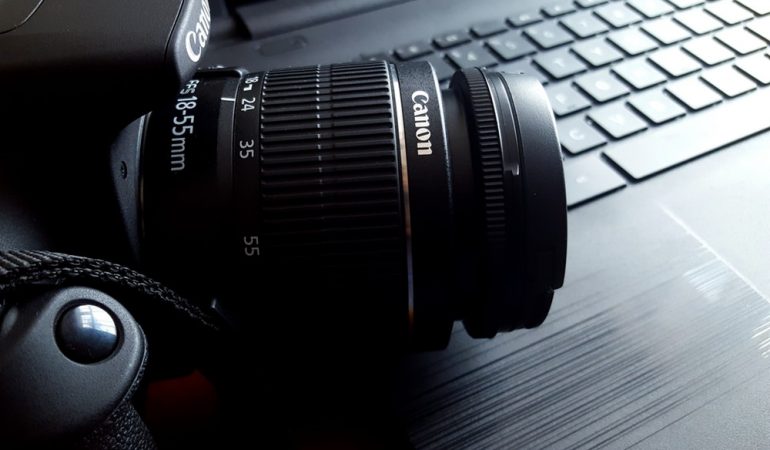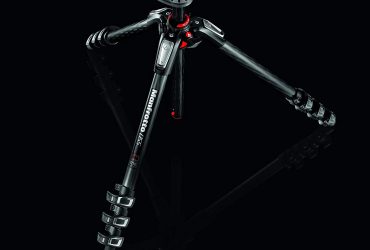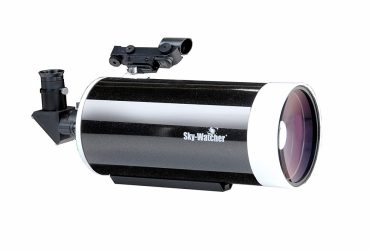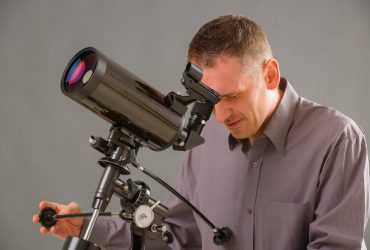Best Astrophotography Camera: Buyer’s Guide and Top 3 Reviews
I’m sure you’ll agree with me when I say that just viewing the night skies searching for celestial bodies and events to observe is hard enough on its own. But if you thought that was tough, try actually recording some of these objects to show your friends and you’ll understand the meaning of nerve wracking. But with the right equipment, the hard part is already done; and it all starts with having the best camera for astrophotography. Get a load of these three options:
1. Looking for a tech packed camera that will allow you to literally map out galaxies without any modifications? With incredibly effective noise reduction and built in subject tracking, the Canon EOS 750D might just be the best DSLR for astrophotography.
2. If your enthusiasm for astrophotography ranks a solid 10 on any scale, then you need a camera built just for the job. The TS-Optics A.S.I. Camera from ZW Optics is a fully dedicated astrophotography camera geared towards nothing but the best general purpose astronomy and planetary imaging.
3. You don’t have to spend thousands to get a great camera for astrophotography. If you’re just starting out and want a decent platform to launch from, how about going for the best budget option, the Canon EOS 1300D DSLR Camera.
What is an Astrophotography Camera?
An astrophotography camera is a piece of equipment that can let you record images of celestial events, astronomical objects and massive areas of the night sky all from the comfort of your backyard. While most people think that only highly specialised cameras can be used, this is not often the case.
Even regular cameras built for general use are still pretty capable of some serious astrophotography. But how do you know which camera will help you get the perfect shot for whatever deep sky object you’re looking at? Well, how about understanding the different types available?
Types of Astrophotography Cameras
i) Regular Point and Shoot Cameras
This is the most common type available in almost all homes. If you’ve got a simple digital camera with one of those built in non removable lenses, automatic focus and built in flash, then chances are it’s a compact point and shoot camera. Unfortunately, these cameras are limited since the lens can’t be removed making focusing difficult and alignment more error prone.
ii) DSLR Cameras
Digital Single Lens Reflex cameras are definitely the next step up our sophistication ladder. The name single lens means your DSLR looks through a lens to give you the exact view of what you’re looking at.
Likewise, most DSLRs have completely removable and even interchangeable lenses that can be adapted directly to a telescope. Combine their sensitivity to dim light, dark subtraction, noise reduction and lengthy exposure capabilities and you’ve got one of the best cameras for astrophotography.
iii) Mirrorless Cameras
Much newer than DSLRs, mirrorless cams allow users to compose and focus directly through the lens. But instead of diverting light with mirrors, they use electronic sensor chips to produce a live image during composition.
Key Features and Considerations when Buying an Astrophotography Camera
With all the different options currently available in today’s market, choosing the best model to spend your hard earned money can be nerve wrecking. Ideally, you want a camera that’s affordable, easy to use and produces excellent results. But there’s a lot more to it than just that. Here are a few factors to consider and features to watch out for.
- a) Image Scale – This refers to how a piece of the night sky corresponds to one pixel on your camera. Image scale is measured in arcs-second per pixel and affects how large an area you can view and how many pixels you can get on a single target.
- b) Noise – In this case, noise refers to the measure of degree to which your camera chip reports photons that aren’t there. Some of the causes include heat recording, electronic design, and readout noise recorded by the circuit errors. All in all, cameras with lower noise are preferred for clearer astrophotography.
- c) Price – Typically, high end, expensive cameras give you built in filter wheels, regulated multistage cooling, larger chips with more pixels, and very high sensitivity and low noise.
Best Astrophotography Camera Reviews
1. BEST DSLR CAMERA: Canon EOS 750D Digital SLR Camera
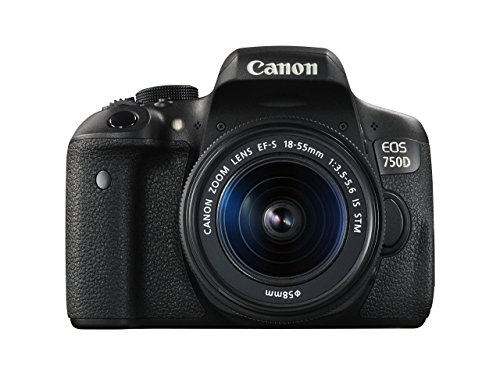
Pros
- Responsive live view performance
- 24.2 Megapixels
- Low noise for great image quality
Cons
- Camera has no weather sealing
- Viewfinder only covers 95% of scene
Overview
With some of the most responsive live view performance and incredible all round, versatile imaging, the Canon EOS 750D Digital SLR Camera might just be the best gift to both beginner and experienced astrophotographers alike.
Sure, it might not be packed with fancy, attention grabbing features like some cameras, but I’d prefer to be dazzled by the photo quality and capabilities rather than the exterior – especially since we’re talking about capturing images millions of light years away.
The EOS 750D allows you to capture detailed, high resolution photos and control over depth of field thanks to a 24.2 Megapixel factor. Canon spares no expense when it comes to technology.
In addition to extreme noise reduction, the Hybrid CMOS AF III ensures that the focusing is accurate, smooth, and very easy. Another feature that makes it great for astrophotography is the intelligent viewfinder that shows you data to get as clear a shot as possible.
What It Does Best
The Canon EOS 750D Digital SLR Camera does a lot of things the way you want it to. When it comes to astrophotography, you get to really appreciate the continuous shooting performance that levels of at 5fps. But that’s not all; this is backed up by a modest buffer memory that maintains a constant speed for several RAW frames.
Another area where this camera excels is in the tracking ability. The EOS’s subject tracking gets far more responsive and extremely accurate now that the camera has a live view mode. For family pics, you’ll notice that the focus waits for objects to stop moving. But once you get a setup rigged to automatically track the sky’s motion, the focusing actually works in your favour.
Flaws But Not Deal Breakers
There’s no question about it, the Canon EOS 750D Digital SLR Camera is hands down the best DSLR for astrophotography. But as the saying goes, pick any two cameras out there and it’s a guarantee that none will be able to perform all tasks perfectly.
With the 750D, I’ll start with the first obvious shortcoming – battery life. The battery life is rated at about 440 shots making it quite inferior compared to some of canon’s other cameras. On top of that, the viewfinder is a bit regressed and only manages to cover about 95% of the entire scene. Still, it just might be the clearest, most vivid 95 % you’ve ever seen.
What Other Customers Think
As always, most of the customers who bought the new Canon EOS 750D Digital SLR Camera barely use it to its full potential. As expected, almost everyone who bought the camera got it for family photos and what not. Were they satisfied? More than elated with the quality of photos and sophisticated technology. But that’s not what we’re interested in here. Today, we’re looking at what astrophotography enthusiasts had to say. Of course, the fact that this bad boy boasts of 24.2 Megapixels is a good thing for all stargazers.
Should You Buy It?
Consistent, superb clarity, low noise, and some of the most responsive live view performance of any cam, the Canon EOS 750D Digital SLR Camera is definitely one of the best DSLR cameras for astrophotography. Not only are the polished controls super easy to use, but Canon made sure to include as much technology as you need for both celestial and deep sky astrophotography. Whether you are a beginner or experienced stargazer, the 750D is definitely a solid option to consider.
2. BEST DEDICATED (CCD) CAMERA: TS-Optics ZWO A.S.I. Camera
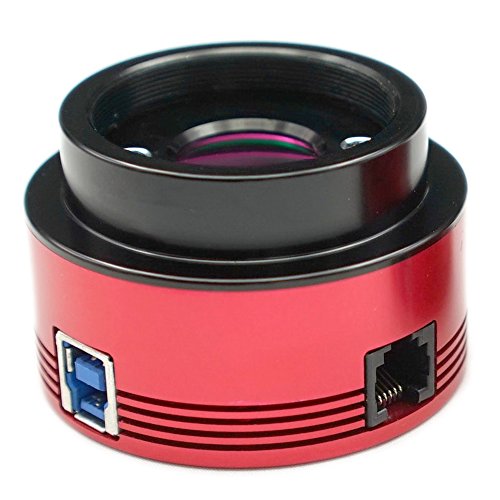
Pros
- Dedicated, high performance colour astro camera
- USB 3.0 offers minimal download time
- Allows for beautiful overview imaging
Cons
- May be a bit on the pricey side, but well worth it
Overview
Are you serious about your astrophotography? Then why not get a camera that is solely dedicated to all things astronomy? Over the years, camera manufacturer ZW Optical has given us an incredible line of models designed for imaging general purpose astronomy and planetary views.
But out of all the CCD based and CMOS cameras, one of them really grabbed my attention. The ASi174MC TS-Optics A.S.I. Camera is compact, extremely easy to use, and compatible with pretty much all types of standard camera controls and imaging software.
Now for the specs. This model comprises of a high performance color astro camera with a large 2.3 megapixel sensor. The autoguiding connector makes this color camera ideal for planetary and lunar photography as well as deep sky imaging. It’s also USB 3.0 enabled and supports Windows, Mac and Linux.
What It Does Best
Well, the TS-Optics ZWO A.S.I. Camera is engineered to be dedicated astronomy equipment. And because of that, it excels far beyond any other camera on this list when it comes to both capturing and developing the clearest celestial images.
Sure, ASI cameras have always been great for planetary photography, but the ASi174MC has a secret weapon that makes it especially popular with experienced astrophotographers. Thanks to the combination of active cooling with photosensitive CMOS sensors, you get unmatched quality deep sky photos.
Flaws But Not Deal Breakers
Colour cameras are always a good bet, especially if you’re just starting out with astrophotography. They use a filter to pass green, blue, or red light into the pixels which your camera interprets to produce a full colour image.
Unfortunately, the ASi174MC restricts you to only the colours provided by the filter and processing. So in addition to losing image resolution and sharpness with your camera, you’ll have a hard time adding information during the processing stage. Still, the image quality is incredibly sharp and accurate, even for deep sky objects.
What Other Customers Think
Looking at some of the previous reviews, it’s pretty hard to find even one customer who wasn’t thrilled with the purchase. But then again, the ASi174MC is a dedicated, high performance astrophotography camera. So it’s no surprise that customer satisfaction levels are through the roof.
From beginners to experienced astronomers, more and more people are lauding the camera for its sleek planetary photography and deep sky imaging capabilities. Still, some customers couldn’t get over the high price range initially, but once you get to use the camera, it’s worthe very penny.
Should You Buy It?
If you’re serious about astrophotography or want to upgrade from an entry level digital camera to something more practical, then the TS-Optics A.S.I. Camera from ZW Optics is definitely worth giving a shot. With it’s larger sensor, autoguide connectors, great noise response and colour imaging, you’re guaranteed of top notch moon, planetary, and deep sky photography.
3. BEST BUDGET CAMERA: Canon EOS 1300D DSLR Camera
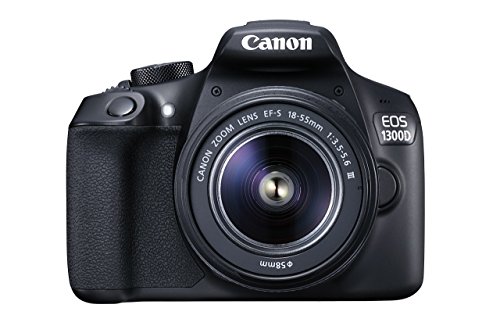
Pros
- Most affordable DSLR for astrophotography
- Vivid imaging quality
- Features NFC and Wi-Fi capabilities
Cons
- Outdated 18 Megapixel sensor and 9 point AF system
Overview
The world of astronomy can be tough, I’ll give you that much. But if you think just looking up is tough, try actually recording the secrets and wonders of the deep sky. But contrary to what you think, you don’t need to spend thousands of pounds looking for the perfect camera. Turns out you can get a decent enough camera for the job and at only a fraction of the price.
I’m talking about Canon’s best gift to beginner astrophotographers – the Canon EOS 1300D DSLR. Not only does this bad boy give you 18 whole Megapixels to work with, it also allows you to capture distinct, DSLR quality shots of celestial objects. It’s also comes with a Canon EF lens mount and is Wi-Fi and NFC supported.
What It Does Best
Let’s face it; today’s breed of astronomy and celestial imaging is more or less an automated process. From the observation all the way to the shooting, and more so the developing, pretty much all of the entire process requires the use of programs, applications, software and other accessories. And this is where the EOS 1300D DSLR Camera excels.
It’s got one of the widest ranges of compatibility available – and that’s good news for anyone interested in astrophotography. Whether you’re using the WI-fi or NFC (near field communication), you can rig the camera to take pictures remotely from your computer or phone even while it’s attached to a telescope. That’ll give you some extremely incredible, low noise stills of moons, planets and even galaxies.
Flaws But Not Deal Breakers
What can I say folks, there’s a reason why the Canon EOS 1300D DSLR Camera might just be the cheapest doable model for astrophotography. For starters, it’s got one of the slowest focusing capabilities in live view mode.
For those of you who don’t know, live view mode is essential if you want to capture especially clear images of the deep skies. So with a slower focusing ability, you can expect to be out there in the cold night just a bit longer than you would with a high end DSLR.
What Other Customers Think
Suffice it to say that most of the customers who buy the Canon EOS 1300D DSLR Camera are actually impressed by its ability to take family photos that they give nothing but gleaming reviews. But for the knowing astronomer, there might be a couple of issues that came up.
Now, I’ll admit that the initial images of whatever deep sky object you take with the 1300D are a bit low quality, but all that can be fixed with a little post imaging software.
Should You Buy It?
Do you enjoy looking at stars and galaxies but want nothing more than to record and share what you see? And how about your budget, are we talking super rich, or non existent? If the answer was the latter, then I’m betting that the best budget camera for astrophotography sounds pretty good right about now. With low thermal sensitivity and a live view LCD, the Canon EOS 1300D might even be a steal if you’re looking to advance a career in photographing bright targets such as Jupiter, Saturn and their moons. And as a bonus, you get something to capture your family moments as well.
